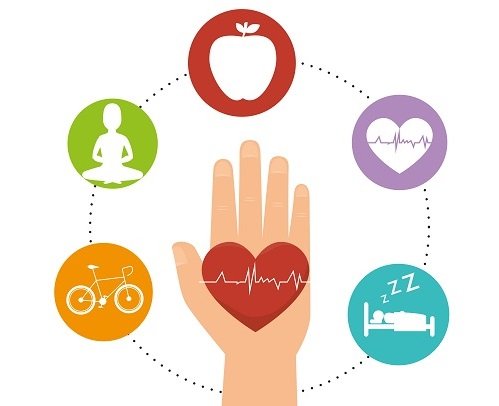15 Healthy Snack Ideas for Busy Individuals on the Go

Updated at: 2023-07-04 19:48:45 (2 years ago by Melkisedeck Leon Shine)
15 Healthy Snack Ideas for Busy Individuals on the Go 🥦🍇🥪
In today's fast-paced world, it can be challenging to maintain healthy eating habits, especially for individuals with a hectic schedule. However, with a little planning and creativity, it is possible to enjoy nutritious snacks on the go. Here are 15 delicious and easy-to-make snack ideas that will keep you fueled and energized throughout the day.
-
Veggie Sticks and Hummus 🥕🫑: Slice up some crunchy vegetables like carrots, bell peppers, and cucumber, and pair them with a portion of creamy hummus for a satisfying and nutrient-rich snack.
-
Greek Yogurt Parfait 🍓🥣: Layer Greek yogurt with your favorite berries, granola, and a drizzle of honey for a protein-packed and flavorsome snack that will keep you full for hours.
-
Trail Mix 🌰🍫: Create your own trail mix by combining nuts, seeds, dried fruits, and a sprinkle of dark chocolate chips for a crunchy and nutritious snack.
-
Apple and Peanut Butter 🍎🥜: Cut up an apple into slices and dunk them in a spoonful of natural peanut butter for a delightful blend of sweet and salty flavors.
-
Rice Cakes with Avocado 🍚🥑: Top a rice cake with mashed avocado, a sprinkle of chili flakes, and a squeeze of lemon for a light and refreshing snack that is rich in healthy fats.
-
Hard-Boiled Eggs 🥚: Boil a batch of eggs at the beginning of the week and keep them handy for a protein-packed snack that will keep you satisfied between meals.
-
Edamame 🍡: These little green soybeans are packed with protein and fiber. Enjoy a handful of steamed or roasted edamame for a nutritious and low-calorie snack.
-
Whole Grain Crackers with Tuna 🍘🐟: Spread some canned tuna mixed with Greek yogurt on whole grain crackers for a quick and easy snack that is high in omega-3 fatty acids.
-
Cottage Cheese and Pineapple 🧀🍍: Pair a serving of cottage cheese with chunks of fresh pineapple for a sweet and creamy snack that is rich in protein and vitamin C.
-
Oven-Baked Kale Chips 🌿🥔: Toss kale leaves with olive oil, salt, and your favorite seasonings, then bake until crispy for a guilt-free alternative to potato chips.
-
Chia Pudding 🌱🥣: Combine chia seeds with your choice of milk and let it sit overnight for a creamy and fiber-packed pudding. Add fruit or nuts for extra flavor and texture.
-
Sliced Turkey Roll-Ups 🦃🌯: Wrap slices of turkey around cucumber or bell pepper strips for a protein-rich snack that is low in carbs and high in vitamins.
-
Almond Butter and Banana Rice Cakes 🥜🍌🍚: Spread almond butter on rice cakes and top with banana slices for a tasty and satisfying snack that delivers a good dose of healthy fats and natural sugars.
-
Roasted Chickpeas 🌰: Roast chickpeas with a drizzle of olive oil and your choice of spices until crispy for a fiber-filled and protein-rich snack that is perfect for munching on the go.
-
Energy Balls 🍡: Mix together oats, nut butter, honey, and your favorite add-ins like chocolate chips or dried fruits. Roll them into bite-sized balls and refrigerate for a delicious and convenient energy boost.
Remember, it's important to prioritize your health even when you're on the go. By incorporating these 15 healthy snack ideas into your routine, you can ensure that you have nutritious options readily available to keep you fueled throughout the day. So, wave goodbye to unhealthy vending machine choices and embrace these tasty and nourishing snacks for a healthier and more energetic life!





